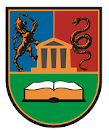Please use this identifier to cite or link to this item:
https://scidar.kg.ac.rs/handle/123456789/22636Full metadata record
| DC Field | Value | Language |
|---|---|---|
| dc.contributor.author | Petrović, Nenad | - |
| dc.contributor.author | Kostic, Nenad | - |
| dc.contributor.author | Marjanovic, Nenad | - |
| dc.contributor.author | Nikolic, Ruzica | - |
| dc.contributor.author | Ulewicz, Robert | - |
| dc.date.accessioned | 2025-10-30T09:48:25Z | - |
| dc.date.available | 2025-10-30T09:48:25Z | - |
| dc.date.issued | 2025 | - |
| dc.identifier.issn | 1996-1944 | en_US |
| dc.identifier.uri | https://scidar.kg.ac.rs/handle/123456789/22636 | - |
| dc.description.abstract | The influence of cardinality constraints on the simultaneous optimization of truss sizing, shape, and topology, when used for weight minimization, is explored in this study. By integrating precise cardinality constraints, the implications for achieving global optimal solutions for different numbers of different cross-sections were investigated. This research underscores the significance of these constraints in enhancing the practical applicability of optimization outcomes, particularly in complex structural configurations where traditional approaches may lead to excessive requirements of numerous different cross-sections. Comprehensive experimentation and comparative analysis, across various standard and practical truss examples, demonstrate the effectiveness of cardinality constraints in guiding optimal design configurations. Notably, the presented findings reveal a trend in weight savings, depending on the number of different cross-sections used relative to global optima, displaying the utility of this constraint in achieving practical and efficient designs. Case studies on a produced roof truss underscore the applicability of this approach in practical engineering scenarios. They offer insights into the optimal design configurations for problems that do not allow for drastic changes due to their restrictive design mandate. This research is part of continued advancements in truss optimization methodologies, with implications for promoting sustainability and cost-effectiveness in structural engineering practice. By elucidating the role of cardinality constraints in shaping the optimal design solutions, this study should contribute to the broader discourse on efficient structural design strategies. | en_US |
| dc.language.iso | en | en_US |
| dc.relation.ispartof | Materials (Basel, Switzerland) | en_US |
| dc.subject | truss optimization | en_US |
| dc.subject | cardinality | en_US |
| dc.subject | Euler buckling | en_US |
| dc.subject | optimization constraints | en_US |
| dc.subject | sizing | en_US |
| dc.subject | shape | en_US |
| dc.subject | topology | en_US |
| dc.subject | optimization | en_US |
| dc.title | Assessing the Influence of Cardinality Constraints on the Simultaneous Optimization of Truss Sizing, Shape, and Topology | en_US |
| dc.type | article | en_US |
| dc.description.version | Published | en_US |
| dc.identifier.doi | 10.3390/ma18071457 | en_US |
| dc.type.version | PublishedVersion | en_US |
| Appears in Collections: | Faculty of Engineering, Kragujevac | |
Files in This Item:
| File | Size | Format | |
|---|---|---|---|
| M21-Petrovic-materials.pdf | 3.68 MB | Adobe PDF | View/Open |
Items in SCIDAR are protected by copyright, with all rights reserved, unless otherwise indicated.

